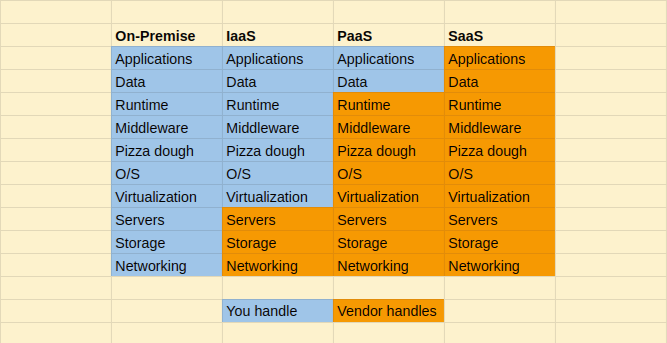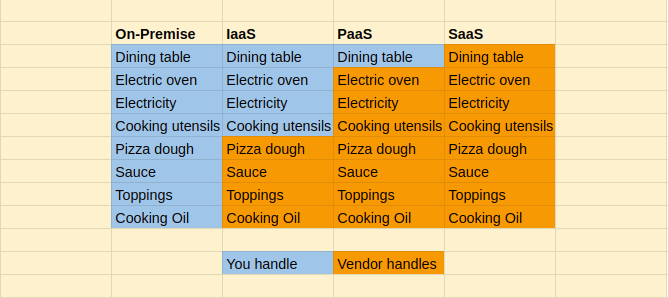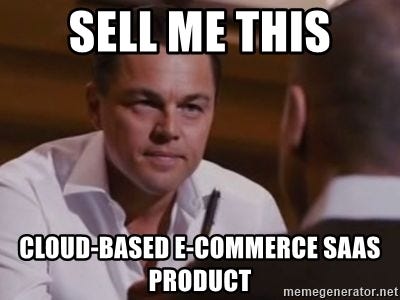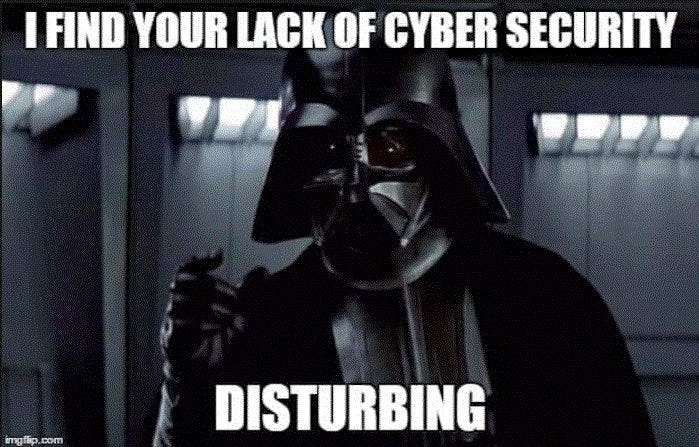Latest news about Bitcoin and all cryptocurrencies. Your daily crypto news habit.
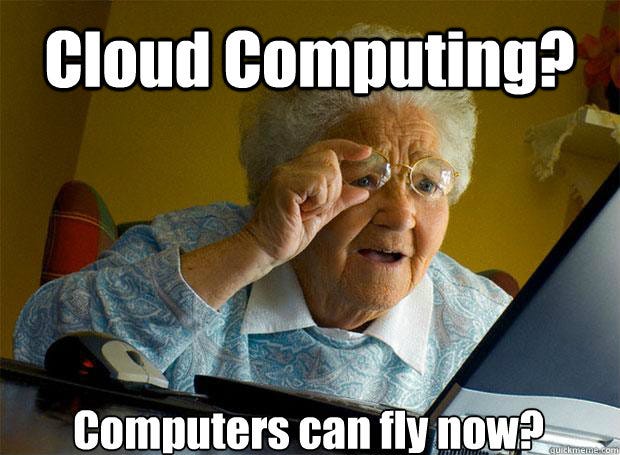
This article will make crystal clear what SaaS is and why SaaS seems to grow so tremendously. We also differentiate between SaaS, PaaS and IaaS (with a pretty cool example ;) ) and also point why SaaS application development is the best thing ever.
In this article, we cover:
- What is SaaS?
- Difference between IaaS, PaaS and SaaS
- Why SaaS?
- Advantages and disadvantages of SaaS
- SaaS and security
1. What is Software as a service (SaaS)?
One of the three components of cloud computing, Software as a Service (SaaS) is a software distribution model in which a third-party provider hosts applications and end-users can access the software over the Internet.
SaaS application development eliminates the need for organizations to install and run applications on their own computers or in their own data centers, making the infrastructure investment null. This means no shouting out to IT specialists to download software to each and every computer in your office or worry about keeping the software on every computer up-to-date.
Let me explain what SaaS is with a simple example. You go out for dinner. You choose the place, the menu and pay to enjoy ready-made food. Everything including rent of the place, buying food, cooking, cleaning, and service; is handled by the restaurant. SaaS application is like a dine-out. It offers ready to use solutions for particular business needs.
Now that you have a vague idea about SaaS platform, let’s quickly, in brief, discuss the other 2 components of cloud computing: Platform as a Service (PaaS) and Infrastructure as a Service (IaaS).
2. IaaS, PaaS, SaaS — Difference
Platform as a Service provides framework and environments that developers can leverage for developing, testing, and managing custom applications. So the vendors provide the infrastructure and the developers code.
Instead of delivering software over the internet, PaaS provides a platform for software creation, unlike SaaS. Similar to SaaS, developers don’t need to worry about OS, updates, storage, etc.
Just like SaaS solutions, one can also opt for PaaS solutions with a pay-as-you-go pricing model.
Infrastructure as a Service
IaaS comprises of automated and scalable resources with cloud storage and network capabilities to provide virtualized computing resources over the internet. These cloud servers and the other resources are provided via dashboard and API.
IaaS clients have direct access to their servers and storage and additionally gain access to a much higher order of scalability.
As opposed to SaaS and PaaS, managing the OS, middleware, runtime, etc. are the client’s responsibility. IaaS providers are responsible for managing servers, hard drives, virtualization, and storage.
IaaS is said to be the most flexible cloud computing module. Let me explain the difference in SaaS, Paas, IaaS and On-premise software with a cool example:
Going back to the example of dining out — say you want to order a pizza. Let me use the example to break it to you what On-premise, IaaS, PaaS, and SaaS would get:
I hope now the difference is pretty clear!
Where can we use SaaS and when is it favorable to use SaaS?
SaaS can be used to develop any enterprise applications — PO, DBMS, CAD, CRM, MIS, HRM, GIS, etc, etc.
A global CIO survey in 2018 concluded that SaaS has been incorporated into the strategy of nearly all leading enterprise software development. 93% of CIOs said they are adopting or considering the cloud, and a majority (54%) expect to use cloud software for mission-critical applications within the next 3 years. Over 70% of CIOs cited scalability and agility as the motivation to adopt cloud.
Further read: Challenges in enterprise software development
When to use saas?
- When you need the application to be significantly scalable.
- Applications with equal web and mobile demand.
- Quickly launching a business without worrying about server configurations and updates.
Binaryfolks is a SaaS application development company, but that’s not why we are pushing you towards adopting SaaS. Let’s see why one should adopt or switch to SaaS solutions.
Why SaaS?
The global Software as a Service industry is growing at an exponential rate. According to Forbes, the enterprise SaaS market is now generating $20B in quarterly revenues for software vendors, a number that is growing by 32% per year.
Here are some reasons for any enterprise or startup to update or switch to the SaaS platform:
Multi-Tenancy Architecture
This means a single instance of the software is available to serve multiple customers. Therefore, all users and applications share a common infrastructure and code base that is centrally maintained.
This multi-tenancy makes it easier to customize SaaS applications in accordance with individual enterprise business requirements. Buyers can customize the look and feel as well as add custom fields, define business-specific workflows, play around with permissions, etc.
Multi-tenancy also ensures that reduces upfront cost because of the shared infrastructure as well as low maintenance costs.
Seamless integration
To run a successful business, you need to integrate all your applications with one another. Integrating critical systems effectively is crucial to extend functionalities within the organizational silos and maximizing the revenue.
There are APIs to enable seamless SaaS integration with not only to internal applications but also to other SaaS offerings. This minimizes development costs and maximizes the value of your SaaS investment.
Scalability
As a business owner, you will always eye an option that is scalable. SaaS applications enable you to choose your own model w.r.t your business requirements and easily upscale or downscale it when a business requirement changes. So, no need for purchasing additional hardware when a company expands; only computing capacity like data storage, bandwidth, etc.
Cost savings
In terms of importance, “lower overall costs” is the second biggest driver of SaaS adoption.
SaaS is generally subscription-based and has no up-front license fees. SaaS has a “Pay as you go” model too that relates cost to usage. If more components and services are used, price increases; if less are used, price decreases. AWS provides “Pay as you go” pricing where charges are based on no. of instances, API requests, etc.
Painless upgrades
Because SaaS applications are multi-tenant applications, instead of updating every instance, the codebase is updated and instantly accessible to all users.
If the SaaS application runs on a subscription plan, the fees cover the maintenance, upgrades, bug fixes and other costs. So, no need to install or download any sort of update or security patches.
With advantages, there are also some disadvantages of SaaS application development, including:
Loss of Control
On-premise software solutions dictate a higher level of control than hosted solutions as the control in hosted solutions lies with a third party.
Typically everyone has to use the latest version of the software application and cannot defer upgrades or changes in the features.
Performance
The SaaS application runs on a remote data center whereas on-premise applications will run on a user’s desktop. There might sometimes be issues with the performance in that case. A fast and reliable internet connection can help you get away with performance related woes.
Dependence on the service provider
With SaaS application development, there is a huge dependency on the service provider. If your SaaS provider goes bankrupt or if they decide to discontinue the service, you will not have access to your application anymore. Similarly, even if he decides to temporarily take the service off the network, then also you cannot use the application.
SaaS has its share of advantages and disadvantages. The advantages triumph the disadvantages though. Speaking of pros and cons, there is a huge debate on whether SaaS application security is a benefit or a disadvantage for SaaS — let’s settle this debate once and for all.
SAAS Security
As time is progressing, cloud networks are becoming more frequently used for enterprises and mission-critical business applications, so, security tops the list.
What puts SaaS apps at risk?
- According to Cloud Security Alliance, “Managing identities and access control for enterprise applications remain one of the greatest challenges facing IT today”.
- Cloud standards are not that strong and also cloud service providers often release very few details about their data centers and operations.
- Because under the SaaS model, applications can be accessed wherever there is Internet connectivity is also a risk.
- There is not enough idea of where the data is as sometimes the providers might need to move the data around due to load balancing and improved latency.
- As virtualization enables single servers to store data of multiple clients, if someone hacks a single server, it puts the entire data of many customers at risk.
- As data is hosted on the cloud, the clients have no control over the data. In case of discrepancies, one needs to rely on the provider for answers.
Despite all this, Bain and Co. have estimated the SaaS growth rate to be 18% CAGR by 2020. Binaryfolks is a pioneer in SaaS application development for the last 7 years and we know how to minimize the risks so that the SaaS solution can maximize your investment!
Some SaaS security best practices
End-to-end Encryption: End-to-end encryption is the most secure way of user-server interaction and is carried out over SSL connection. Encryption is essential for sensitive data too. Make sure your cloud service provider provides customizable field-level encryption too.
Vulnerability Testing: Use some industry-leading SaaS application monitoring tool to track the SaaS web applications and run lightweight scans to find vulnerabilities and risks. Choose a solution that has fully automated security assessments for testing the application health and also an on-demand scan functionality.
Data Deletion Policy: After a customer’s data retention period has ended, the customer’s data must be programmatically deleted.
Your SaaS provider can facilitate a cloud environment only for you instead of leveraging a multi-tenant instance so that you have control over all the data. This is referred to as a virtual private cloud (VPC) by AWS. Users will be in complete control over their virtual networking environment, including selecting their IP address range, creating subnets, and configuring route tables and network gateways.
Parting words
It is predicted that your business will grow by 19.63% if you move to the cloud. Also, SaaS solutions mean considerable cost savings. I hope this article paints a clear picture as to what SaaS can do to transform your business and give you that competitive edge over your competitors.
Originally published at https://www.binaryfolks.com.
What is SaaS? A Complete Overview was originally published in Hacker Noon on Medium, where people are continuing the conversation by highlighting and responding to this story.
Disclaimer
The views and opinions expressed in this article are solely those of the authors and do not reflect the views of Bitcoin Insider. Every investment and trading move involves risk - this is especially true for cryptocurrencies given their volatility. We strongly advise our readers to conduct their own research when making a decision.
